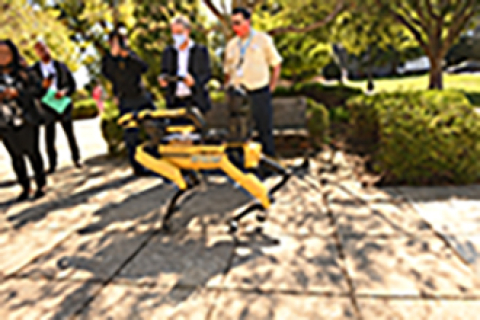EM has developed a new, innovative system that reduces both operational downtime and personnel exposure at a key facility in the Savannah River Site (SRS) liquid waste system.
Leaders from key EM sites speaking at the 2021 National Cleanup Workshop detailed achievements over the past several months, highlighting a new phase of progress in the cleanup program.
Focusing on the future workforce is vital to the EM mission, according to panelists at the 2021 National Cleanup Workshop who discussed challenges and possible solutions in recruiting and retaining talent.
DOE’s Oak Ridge Office of Environmental Management (OREM) and its contractor UCOR are expanding partnerships with Historically Black Colleges and Universities (HBCUs).
Krohn will be honored with a Bronze Stevie Award for his accomplishments at the Savannah River Site (SRS) during the 18th annual International Business Awards celebration in December.
Oak Ridge Office of Environmental Management (OREM) contractor UCOR recently transitioned to a new waste tracking system that improves how shipments are tracked from work sites to disposal locations.
The Oak Ridge Office of Environmental Management (OREM) and its contractor Isotek successfully completed processing and disposing the low-dose inventory of uranium (U)-233 stored at Oak Ridge National Laboratory (ORNL) this month.
DOE recognized a former Mississippi State University (MSU) research center director with a career award honoring his work to evaluate and improve high efficiency particulate air (HEPA) filters used to contain nuclear materials.
EM and it’s liquid waste contractor at the Savannah River Site (SRS) have developed a unique commercial mixer pump to use in a tank with space limitations, allowing waste retrieval efforts to advance in the tank farms.

Members of EM leadership recently visited Catholic University’s Vitreous State Laboratory (VSL), a contributor to key innovations in the vitrification technology central to Hanford’s Waste Treatment and Immobilization Plant (WTP) in Washington state.

